Is using generative AI ethical? Recently, we wrote an article about how generative AI tools like ChatGPT are increasing two problems that content marketers have been facing ever since that term became popular: noise and cynicism. There’s just so much content out there, we can’t possibly digest it all – and how do we know if we can trust it?
Another place where we’re facing information overload and a lack of clarity around what we can trust is in the subject of generative AI and ethics. Are the evangelists misleading us with their enthusiasm? Or are the naysayers overhyping the dangers? And how should we navigate the advance of these technologies, especially as values-led businesses?
At RH&Co, we’re keeping an open mind when it comes to generative AI. On the one hand, we’ve been experimenting with how useful it can potentially be to us and to our clients. But as a B Corp, we’ve also been looking into the darker side of AI, so that we can build out our own policies in a way that supports the planet and its people.
TL:DR
- A caveat before we start
- Environmental concern: generative AI’s use of electricity and water
- Misinformation: Hallucinations and fake news
- Human rights and ethics: what about the people?
- How should values-led businesses respond to generative AI?
A caveat before we start
First, let’s clarify the language. This article by the Harvard Business Review does a great job of distinguishing between important AI terms such as generative AI, machine learning, natural language process and so on.
It’s important to understand that what we’re talking about in this article is the tools that respond to human prompts by creating content in one form or another. Tools like ChatGPT, Dall-e, Midjourney and so on.
Secondly, we’re not discounting the many ways people are finding tools like these helpful, from helping to overcome dyslexia when writing emails or internal reports, to creating summaries of meetings for quick reference.
Generative AI is changing rapidly, and to discuss the merits of individual tools and their current abilities would make this article redundant almost as soon as we hit publish. Instead, when asking “Is generative AI ethical?”, we want to look at the broader issues that underpin the use of this technology so that we can ensure that, as a user group, we call for a version of AI that doesn’t sit contrary to our values.
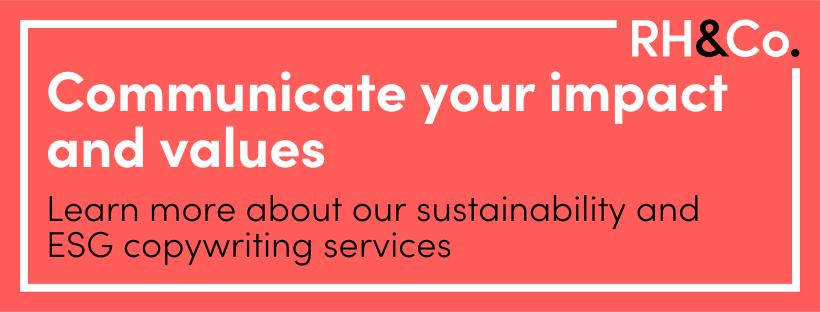
Environmental concern: generative AI’s use of electricity and water
Every time we use digital technology, we use energy. Not just the electricity that goes into powering our smart phones and computers, but the energy that goes into sending our emails, storing our documents and connecting our video conferences. As a result, every individual and organisation now has a digital carbon footprint.
Generative AI is adding to this footprint. There’s the energy needed to develop and train the models, not to mention the energy needed to complete a query. While there are no straightforward answers when it comes to how much energy AI uses – as this article by a Boston University computer sciences professor showcases – it’s clearly something we need to consider.
The same goes for water use, as this article in The Independent highlights. One of the studies referred to in the article, by researchers at the University of California and University of Texas, suggests that “training GPT-3 in Microsoft’s state-of-the-art U.S. data centers can directly evaporate 700,000 liters of clean freshwater”, and that “global AI demand may be accountable for 4.2-6.6 billion cubic meters of water withdrawal” by 2027.
This is not to say that we shouldn’t use generative AI. But using it arbitrarily when other options are available feels like an unnecessary way to increase our digital carbon footprint and water use.
Misinformation: Hallucinations and fake news
Lying and misleading people isn’t a new phenomenon – it’s been around as long as the human species has. But it’s easier to mislead today than it’s ever been, and to do so at scale.
This study, published by Cambridge University Press, looks at the role of artificial intelligence in disinformation. In the abstract, the researchers state that AI systems “boost the problem [of disinformation] not only by increasing opportunities to create realistic AI-generated fake content, but also, and essentially, by facilitating the dissemination of disinformation to a targeted audience and at scale by malicious stakeholders.”
In some cases, people are deliberately using generative AI to create fake content, as with the video of Australian businessman Dick Smith supposedly promoting an investment opportunity – or the numerous examples cited in this Sky News article.
But there’s also the challenge of AI ‘hallucinations’, where tools like ChatGPT make up answers rather than admit they don’t know something. Read our article about how AI is increasing noise and cynicism for a prime example involving our very own James Matthews.
Again, although none of this means we should avoid generative AI entirely, it does pose the question of how we regulate it and how transparent we are about using it.
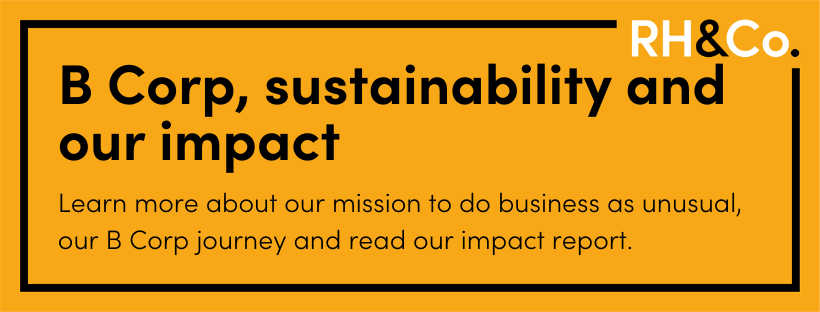
Human rights and ethics: what about the people?
How do you get an AI to decide whether text contains inappropriate or offensive subjects? Easy – just get humans to read the text and tell the AI whether it’s acceptable or not. Except imagine you’re one of those people. What’s that going to do to your mental health?
That’s the issue that faced content moderator Mophat Okinyi when he worked for Open AI (the creators of ChatGPT) in Nairobi, Kenya. The text and images he was required to review depicted a variety of scenes too unpleasant to go into here, leading him to become withdrawn and paranoid, and ultimately resulting in the breakdown of his marriage.
Obviously this is an extreme case but there are other ethical issues that we need to consider when it comes to generative AI. This quote from UNESCO’s Assistant Director-General for Social and Human Sciences, Gabriela Ramos sums up the breadth of the challenge: “AI technology brings major benefits in many areas, but without the ethical guardrails, it risks reproducing real world biases and discrimination, fueling divisions and threatening fundamental human rights and freedoms.”
For those of us in creative industries, a big concern is the way that generative AI is trained on work that human beings have produced and may not have shared reproductive permission for. Is training generative AI the same as an artist being inspired by viewing the works of others, or is it an infringement of copyright?
It’s not a straightforward answer. An article in Harvard Business Review stated that “the legal implications of using generative AI are still unclear, particularly in relation to copyright infringement, ownership of AI-generated works, and unlicensed content in training data.”
How should values-led businesses use generative AI?
So, is using generative AI ethical? We’d love to say that we had a simple answer, particularly as a B Corp that believes in doing business as unusual. Unfortunately, the issues aren’t clear cut, not least because the technology and the regulations surrounding it are changing virtually every day.
So what should we do? Well, we can only say what we at RH&Co are doing, which is staying informed, actively seeking out a variety of viewpoints, experimenting and testing, and keeping an open mind.
Our plan is to draw up an AI policy in time, and when we do we will be sure to share it here on our website. If you have any thoughts, suggestions or resources to share, we would be very happy to receive them.
AI is not going to be the end of the world as we know it but it is going to have an enormous impact on it. Let’s work together to ensure that it is a positive one for our planet and all of its people.
Another post about generative AI and content creation – yawn! Except this one isn’t really about AI at all. It’s about two key challenges that existed long before ChatGPT came on the scene, and which AI is simply going to exacerbate. Challenges that content marketers need to have firmly in their sights if they don’t want to become redundant. Here’s the context…
Ever since ChatGPT launched in November 2022, the debate around using generative AI in content creation has been raging. Some people are all for it, some people are convinced that it’s the end of marketing as we know it, some are sticking their heads in the sand and hoping it all goes away.
At RH&Co, we’ve been experimenting with how it could enhance the work we do for our clients – but we’re also keeping on top of the various environmental and social challenges that it AI presents.
The truth is that whatever argument you might make today will probably be out of date tomorrow, since the technology is changing so fast. There is one thing we can be pretty sure of though, and that is the fact that AI is going to exacerbate two problems content creators already face: noise and cynicism.
TL:DR
- Noise: The rise (and rise) of content marketing
- How AI is adding to the content noise
- Cynicism: who are you to tell me?
- How AI is adding to the cynicism challenge
- How to create content that breaks through the noise and cynicism
Noise: the rise (and rise) of content marketing
In ye olde times (ie the 20th century) content marketing as we know it didn’t really exist. In fact, according to the Content Marketing Institute, the term was first used in 2001. Back then, publishing content was by and large the preserve of media organisations, and only a fraction of businesses even had websites.
Then, in 2003, WordPress and Squarespace launched. Overnight, creating a website became accessible to pretty much anyone. Two years later, YouTube was born, then Twitter the year after that, and content creators had two new platforms through which to share their work.
Since then we’ve seen an explosion of tools and channels with which to produce and distribute content, each one adding to the noise. Today, the amount of content being published on a daily basis is practically unquantifiable. Millions of tweets, blogs, LinkedIn posts, Medium articles, Tiktok videos, Insta reels created and shared every month.
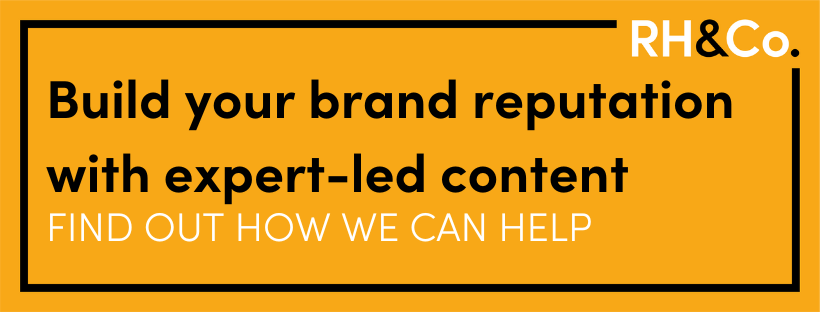
How AI is adding to the content noise
Generative AI tools – from Chat-GPT and Jasper to DALL-E and Runway – are making it easier to produce high volumes of content at speed.
According to Hubspot’s ‘AI trends for marketers 2023’ report, 48% of marketers now use generative AI for creating content. Although 96% go on to edit the copy generated, it saves them an average of 3 hours per piece, meaning they can produce more.
Whether any of it is any good isn’t really the point – bad content existed before AI too. The point is that with everyone able to produce more content, more quickly, there’s more noise, which makes it even harder for marketers to make their brand’s voice heard.
You need people to trust that you know what you’re talking about, otherwise they’ll scroll straight past or click away without hesitation.
Cynicism: who are you to tell me?
A second side effect of the increasing ease with which people have been able to produce and distribute content over the last two and a half decades is the similarly increasing difficulty of policing all that content.
While traditional media has standards to which it has to adhere – at least in theory – those standards don’t exist in nearly the same way when it comes to social media posts, for example. If you want to create a meme and attribute the quote to Albert Einstein, who’s going to ask you to reference your sources?
Just look at the case of Instagram scammer Belle Gibson, who built a personal brand around the fact that she had supposedly “cured herself of cancer” through “clean eating”. Although she was eventually brought to justice, she built up a following of thousands and even launched an app before someone cottoned on to what she was doing.
Likewise, wannabe authors today no longer have to go through the rigours of a formal publishing process – they can simply upload their content to Amazon and use its print-on-demand service. If you want to get a sense of how this has lowered publishing standards, try searching “flat earth book” on Amazon and you’ll see.
In the face of all of this, it’s no wonder that people have stopped asking, “What can you tell me?” and started asking instead, “Who are you to tell me?”

How AI is adding to the cynicism challenge
Thanks to AI, we’ve now gone from a world of fake news to one of deep fakes. Images of public figures doing things they never did – like the video of Australian businessman Dick Smith supposedly promoting an investment opportunity.
There’s an AI Instagram influencer making thousands of pounds a month even though she literally doesn’t exist in real life – and even reportedly getting asked out by celebrities who have no idea she’s not real.
And it’s not just the intentional misinformation that’s an issue. Like many others, we came across an example of AI’s willingness to play fast and loose with truth when our very own James Matthews asked a newly launched ChatGPT to recommend three episodes of his podcast, The Moisture Farm Report.
It selected three – except none of them actually existed. When challenged, rather than admit it couldn’t find any information – the podcast was launched in October 2021 and therefore wasn’t included in the data that iteration of ChatGPT had been trained on – it simply kept inventing new episodes.
Bad sources have always been a problem in content but blatant AI hallucinations are giving people more and more reasons to question what they read online.
How to create content that breaks through the noise and cynicism
Whether you use generative AI to help you in the content creation process isn’t really the issue – it’s how you cut through the noise and the cynicism that counts.
To do this, your content needs to be unique and it needs to be credible. You need to be able to add genuine value and you need people to trust that you know what you’re talking about, otherwise they’ll scroll straight past or click away without hesitation.
One of the best ways you can create content that ticks all of these boxes is to involve subject matter experts in creating content campaigns.
These subject matter experts might be internal – if you work within a consultancy firm then it’s your consultants, for a SaaS platform it might be the CTO or product lead, in a restaurant it’s the chef. Or they could be external – partners, influencers, users.
By harnessing their unique insights and experiences, your content becomes exclusive – something no other brand could produce. And the content becomes a platform on which you can layer other brand building activities, from media opportunities to speaking engagements, sales outreach campaigns and so on.
If you’re interested in learning more, read our guide on how to involve experts in content creation, or get in touch to see how we can support you to create content that cuts through the noise and the cynicism.
A few weeks ago, we attended a marketing conference in Bristol. We made it roughly eight minutes into the initial coffee-and-hello part of the event before someone asked us The Question: “So, how much is AI impacting what you do?”
We get it; everyone wants to talk about ChatGPT and the ramifications for writers these days. Us included – barely a day goes by without at least one conversation about AI, from the ethical questions around its use to how it will make it more difficult to cut through noise and cynicism.
Having seen generative AI at work, we’ve always been pretty confident that it won’t be replacing great human writers any time soon. But while it might not be up to crafting an expert-led article or inventive web copy by itself, we didn’t want to write it off entirely without giving it a good faith go at showing what else it’s capable of.
So for the last few months, I’ve been experimenting with adding AI into the work we do – not having it produce content for clients but asking what other parts of the creative process it could help make more efficient.
ChatGPT doesn’t have a creative bone in its binary code
Getting past the blank page
One of the first experiments I tried with ChatGPT was seeing if it could speed up the process of creating a blog outline. Not write a blog by itself – just to take our notes from a briefing or the transcript of a client call and order the key points into a skeleton we can then write from.
The results were mixed at best but let’s start with the positives. I was surprised at how well ChatGPT could identify the key points of a conversation from only a video call transcript and not only list them out but also provide bullet point summaries of what a client had said around each point.
But when it came to threading those points together into a blog outline, the limitations hit hard. For one, ChatGPT doesn’t have a creative bone in its binary code, so it couldn’t identify any narrative behind the key points it had picked out. It could only create an outline that followed the same course as the conversation, from one point to the next, neatly tucked between a school essay-style intro and conclusion.
It also struggled with the idea that each key point doesn’t need to be a separate section. If given little instruction, it would simply turn each element of the conversation into its own subhead. The result would be a dozen or more sections, plus intro and outro – way too many to squeeze into a +/- 1,000-word article.
If I got more detailed in my prompts, specifying 3-4 subheadings and asking it to group certain key points together to make one blog section, it would get confused. Sometimes it cut down its previous attempt to four subheads by cutting off the bottom eight rather than grouping things together. Other times it just hallucinated and returned any random number of subheads with an apology after for not being able to count to four.
To structure an article, you have to be able to discern – not just what was said in a briefing call but which points are most relevant to the topic at hand, and what narrative thread links them together in the way that’s most interesting to the person reading. And as it stands, that’s just not in ChatGPT’s wheelhouse right now.
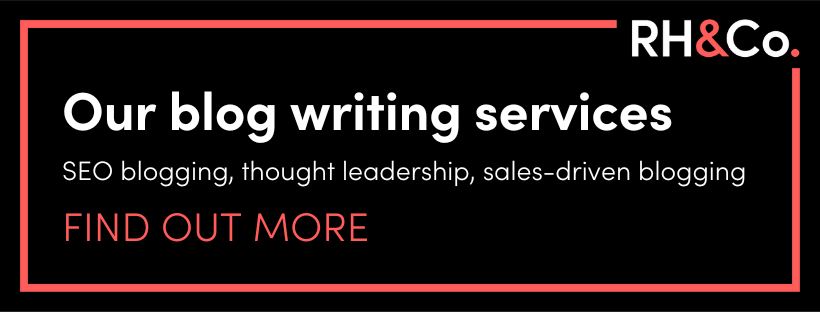
The world’s most eager research assistant
Given that one of ChatGPT’s primary goals is to help people find information fast, I was curious how well it would function as a research assistant. Researching can sometimes be the longest part of writing an article. You know the right statistic is out there but finding it on a site that isn’t disreputable, out of date or, worse, a client’s competitor can be a slog. So any way that AI could speed that up would be a huge win.
There are two obvious problems to work around here:
- Hallucinations. The hardest thing ChatGPT can do is say it doesn’t have an answer, which means if it can’t find the stats you’re asking for, there’s a good chance it will make up results instead. You can ask ChatGPT to provide sources for its answers, but that doesn’t stop it from creating false stats – it just makes it quicker to fact check them.
- Recency. ChatGPT’s training data has a cutoff date, meaning anything published online after that isn’t in its knowledge banks. If you’re looking for anything from the last year (at time of writing, the free version powered by GPT-3.5 is only aware of events up to January 2022), ChatGPT simply cannot help.
But there was one other problem I didn’t expect to find when using ChatGPT to help with research. When it comes to research to support blogs, we’re not just looking for stats that back up what we want to write – we’re also looking for details we hadn’t considered before that spark new ideas and enrich the content.
For example, I was recently writing a blog about the importance of translation and localisation in the adoption of new tech products. When ChatGPT couldn’t return any relevant stats showing that localising marketing materials or UI does lead to greater adoption, I went searching myself. And while I didn’t find the stats I was looking for, I did find ones breaking down the proportions of non-English speakers in predominantly English-speaking countries.
It wasn’t the information I was originally looking for but it did lead me to a worthy point about the need for multilingual marketing even if you’re not planning to sell your products outside of one market – for example, Spanish in the US or French in Canada. But because ChatGPT is designed only to reply to the prompts you give it, it would never have been able to join the dots like this and suggest an angle I hadn’t yet considered.
Optimising articles for SEO
So when it comes to outlining blogs and sparking ideas, ChatGPT isn’t the best. But what about when an article is already written and just needs to be garnished with SEO keywords?
I figured this would be a simple experiment. I give ChatGPT the text of the article and a list of the necessary keywords, ask it to pepper them throughout the blog at least once each, and see what it does. SEO optimisation isn’t a particularly time consuming task, but any way AI could speed that up would be helpful.
Or so I thought.
On its first attempt, ChatGPT returned the exact text of the blog I’d pasted into my prompt. No alterations, no keywords, nothing. Just a word-for-word replica, and the proud assertion that it was a revised version.
After I pointed out what had gone wrong the first time, ChatGPT tried again. And to its credit, it did at least include most of the keywords this time – although they were all added on to the end of random paragraphs and with no accompanying sentence or context. Just… keyword.
I wondered if my prompt was the problem. I’d originally asked ChatGPT to add these words with minimal alteration to the blog itself, so for the third attempt I specified that it could make changes to the body text, such as adding new sentences in the middle of paragraphs, in order to insert the keywords. Just to be on the safe side, I also explicitly asked it to insert the keywords into paragraphs and not tack them onto the end as it had done before.
Third time’s the charm, right? Except… not quite. My attempts to cover off any loopholes or confusion in my prompt just led to ChatGPT returning the exact same copy as it had in its second response. The same keywords in the same places as before. I gave up and did it myself.
My theory on why this went so wrong comes back to the fact that ChatGPT can’t discern like humans can. Inserting SEO keywords might look like a simple find-and-replace job, but there’s more to it than that. To weave in terms without them feeling intrusive to the reader, you have to be able to look at the wider context of a paragraph or whole section. You have to understand which phrases are relevant to which key points in the article.
In other words, you have to use judgement and a little creative thinking – and as we’ve already established, neither of those are qualities ChatGPT can boast.

So… was using AI ever any quicker?
As I’ve been experimenting with AI, there’s one question that keeps coming to mind. It’s not “Is ChatGPT good enough to do X, Y or Z for me?” Instead, it’s “Am I just using AI for the sake of using AI?”
Let’s go back to blog outlines for an example. While ChatGPT falls short when it comes to narrative structures, there are some other kinds of content where AI can actually help. When we’re writing longer form pieces with a focus on SEO, it can help to have ChatGPT lay out distinct talking points in a linear fashion. And because it creates its responses from scraping its banks of training data, the subheads it suggests are usually pretty SEO-friendly.
But structuring a pillar page or a longform SEO piece is rarely something that needs speeding up. Unless you’re writing about a topic that has genuinely never been covered before, it’s pretty evident what information readers need to see and how you need to order it.
So does AI actually make this process any faster? Not really, no – or at least not enough for us to change our entire workflow and become part-time prompt engineers.
We’re all asking questions about AI at the moment – is it good enough, is it ethical, is it the thin end of the robot apocalypse wedge? Often those questions feel like they’re way too big for an individual to answer.
But there’s one question we should all be able to answer, AI expert or not – is using AI for this task worth it? Are ChatGPT, Bard, Dall-e and the like helping you to do something faster, to free up time you can better use elsewhere? Or are you just using them because they’re shiny, they’re new and they’re available?
Because if artificial intelligence can’t help us be any more effective or efficient where we need to be, we might be better off sticking with the intelligence we already have.
The benefit of being a B2C marketer is that you’re normally marketing to individual people. OK, in some instances you might need to get your target buyer’s partner – or perhaps parent – to approve, but generally the final purchase decision is pretty much down to one or maybe two people.
In the B2B world, however, it’s much more complex, with all sorts of buyer personas needing to be convinced, each with a different agenda. So how do you go about building a marketing strategy that speaks to the right people at the right time?
That’s what we’re exploring in this, the second in our series on B2B marketing challenges. If you missed the first one – How to market an intangible offering – make sure you bookmark it for later. For now, let’s dig into the issue of multiple stakeholders.
TL:DR
- Know who comes in at what stage of the buyer journey
- Understand and cater for multiple needs
- Be consistent at every touch point
- Give your advocates a way to sell you in
Know who comes in at what stage of the buyer journey
The first thing you need to do – before you start creating your marketing plan – is to work out which individuals and departments come into the buyer journey at which stages. This will depend on a host of factors, from the size and complexity of the businesses you’re selling to, to how expensive, complex or business critical the product or service you’re selling is.
Whatever the case, there are some general principles that apply across most medium to large businesses…
In our research report, ‘What do CxOs read?’, we learned that C-level execs aren’t really in the market to be sold to. They’re operating at a far higher level than that – interested in the big picture and what’s coming over the horizon rather than which employee benefits platform or renewable energy supplier to choose.
Does that mean you shouldn’t market to them? Absolutely not. But see them for what they are – the agenda setters. They’re the ones that will put employee engagement or carbon neutrality on the radar. In that sense, they’re step one in the marketing long-game.
Later, layers of people below them will be tasked with digging into solution options and selecting potential suppliers or partners. Chances are that the first involved will be those whose department is most closely involved – say, the HR department, if we’re talking employee benefits.
Once you’ve got their attention, you’ll most likely need some sort of approval from other departments, possibly including Finance, IT or Procurement depending on the size of the organisation. In these final stages, the CxOs may well pop back up to give their seal of approval.
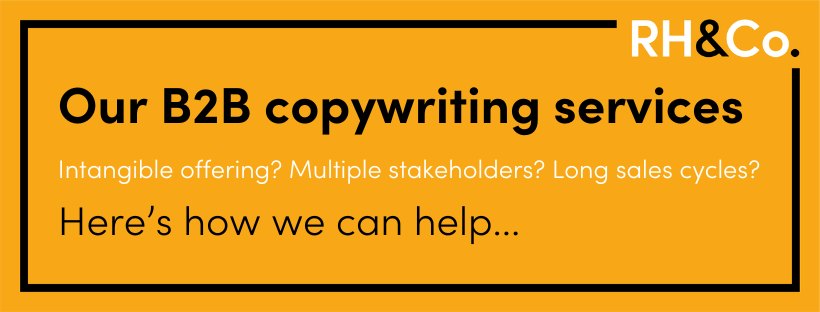
Understand and cater for multiple needs
Knowing which individuals and departments come in at which stage will help you build an appropriate funnel, and pitch the right ideas at the right time. Because each of your stakeholders will need something different from your marketing.
We’ve already talked about how CxOs are the agenda setters, the big picture thinkers, the horizon scanners. As such, they’re interested in learning about upcoming trends and being told what questions they should be asking in the boardroom.
Thought leadership, original research and trend roundups are all going to be useful here – the valuable, relational, educational content that doesn’t have even a whiff of sales about it.
Further down the line, the people tasked with solving a given problem will be looking to have that problem clarified for them, and the solutions explored. They still want impartiality at this stage, but you can move them towards more sales led content.
If you have to get through Procurement, they’ll be interested in compliance checks and making sure you tick all of their predetermined boxes. If what you’re selling falls outside of a department’s budget, you’ll be dealing with Finance, who will inevitably want numbers – what you charge, what results you’ll generate. IT, meanwhile, will want to understand how much you’ll be involved in technical implementation and how you’ll operationalise deployment.
Any comms or content at these levels need to be factual, detailed and as devoid of fluff as it is possible to get – while still maintaining your brand message and voice.
Be consistent at every touch point
Having said that you need to cater for each stakeholder’s individual priorities, it’s important that you don’t present a fractured image to your audience. Each touchpoint with your brand needs to have a degree of consistency, so that a) the HR department and the IT team don’t feel like they’re engaging with two different suppliers and b) a LinkedIn post and an outreach email still feel like they’re coming from the same brand.
To get this right, you need two things. First, you need a strong brand in the first place. You need to know your value proposition and your messaging, you need a distinct voice, and you need guidelines that ensure everyone sticks to them – from the team responsible for creating your thought leadership to the sales people sliding into people’s DMs on LinkedIn.
Second, you need a strategy that ties everything together. Your customer journeys and how people and departments fit into them. What your marketing department is creating and sharing and what your sales teams are following up with once they have a lead. All of these elements need to be tied together so that there’s a plan rather than a scattergun approach.

Give your advocates a way to sell you in
One of the biggest problems with having multiple stakeholders is that you don’t always have access to all of them directly or at least not at the same time. That means even if you gain one person’s attention, you might have to rely on them to accurately sell you in to someone else within the business before you have a chance to reach them yourself.
In a marketing setting, you can counter this with dedicated content that supports cross-stakeholder communications. Our employee benefits platform provider, to go back to that example, might put together an article on ‘5 things your CFO wants to know about our employee benefits platform’. Likewise, we’ve got a blog post about the business benefits of blogging and how to sell them to your boss.
In a face-to-face setting, you’ll need to think about the ‘leave behind’. If you’ve done a great job of pitching your product or service – or even a higher level idea, if you’re chatting to a C-level exec – you want to make sure what you’ve said doesn’t get lost in translation. This is where brochures, pitch decks, and other forms on content can be very powerful.
If you need support creating a content strategy that takes into account multiple stakeholders, get in touch today to see how we can help, or visit our content strategy service page to find out more about what we offer.
Do you ever wish you sold shoes? Or that you were responsible for marketing a 5 star hotel? Something nice and tangible, with a consumer audience and a pretty well defined value hierarchy.
Inevitably it gets much harder when you’re selling a B2B service with as many permutations as leadership development, or as hard to define as ESG consulting. Or maybe you sell something that’s concrete at face value – like offshore wind engineering – but it’s hard to define what makes you different to that other engineering company with a more established reputation.
For the marketers and salespeople tasked with generating and closing leads in these sorts of businesses, there are so many more hurdles to jump through. In our new series, we’re exploring three of those challenges and how best to tackle them. Today we’re starting with one that is literally the most difficult to describe: intangibility.
TL:DR
- Levels of intangibility in B2B businesses
- The real reason intangibility is a problem
- Solution 01: Make intangible elements more tangible
- Solution 02: Focus on measurable benefits and outcomes
- Solution 03: Build trust in your brand
Levels of intangibility in B2B businesses
The dictionary definition of intangible is “impossible to touch, to describe exactly, or to give an exact value.” For B2B businesses it’s the latter two points that cause the biggest challenge. And there are nuances to intangibility too.
For some businesses, their service itself is intangible. This applies to many consultants where what they’re really offering is thinking, conversation and recommendations. In many cases their offering will be entirely bespoke and therefore hard to describe or give a value to.
For others, the intangible element of their offering is the very thing that they hope will differentiate them. One of our clients is a contract cleaning company. They’ve built their business around a unique set of processes that make their service far superior to their competitors. But making that differentiation clear so companies will choose this company over cheaper suppliers is a constant challenge.
And then there are intangible outcomes. If you can demonstrate how you’ll be able to save a business £x each month, you have a relatively tangible benefit to offer. But where proof of success can’t be boiled down to a simple metric, it’s far harder.
In essence, the challenge of intangibility is one of assigning and communicating value. Your client values the tangible, you want to communicate the value of the intangible.
The real reason intangibility is a problem
So why is having an intangible service, USP or outcome such a challenge? Because people want to know what they’re getting for their money. And if you can’t give them a tangible answer, they’ll start trying to anchor your offering to something that feels more tangible to them, something they can justify to procurement or the CFO.
This leads to a skewed focus. For example, they might focus on deliverables when it’s the thought process behind those deliverables that actually adds the most value. Or they might focus on tangible results, which aren’t always easy to define or can be misleading, as is the case with vanity metrics.
Another wrong focus is time input, where clients want to understand the number of days being dedicated to a given project, which is a crude way of measuring value, especially in knowledge-based and creative sectors.
That client discomfort with the intangible might lead them to want to engage with you on a test project first. But in some cases this isn’t really practical. You can’t offer a company just a bit of data science, or a single element of a cultural transformation – and any alternative services you offer as an on-ramp are rarely representative of your core offering.
In essence, the challenge of intangibility is one of assigning and communicating value. Your client values the tangible, you want to communicate the value of the intangible. So how can you overcome this?
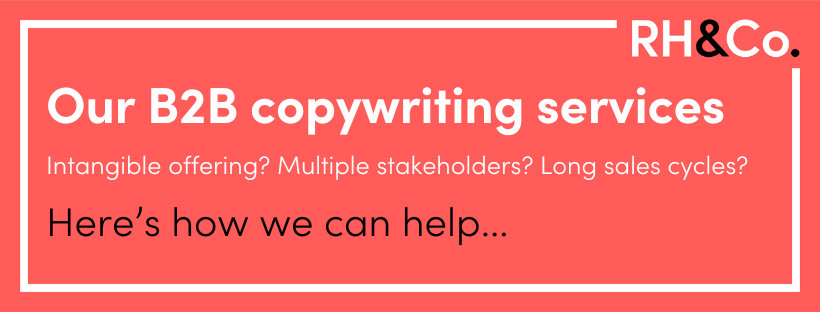
Solution 01: Make intangible elements more tangible
The first option is to ease their discomfort by making your intangible offering feel more tangible. This can be as simple as turning your unique process into a framework, or at least giving it clearly defined – and cleverly named, if you can stretch to it – steps.
For instance, although their IT transformation projects can take many forms, our client LXS Consulting breaks down their alt-net solutions into components, describing the value of each:
- Stakeholder management
- Pain point analysis.
- Business process engineering.
- Solution design.
- Architectural expertise.
- Business operations integration.
- Technology implementation.
- Testing.
Within our content strategy offering, we have a series of components such as Expert Gold Mining, Sales Enablement and Embedded Research, which help clients to understand what their strategy package will entail.
Likewise, a leadership development consultancy might talk about 360 reviews, employee engagements surveys or team coaching sessions.
By focusing on the ‘how’ of what you do – in other words, the features of your service – you sidestep the risk of being ‘fluffy’, which can sometimes happen when you focus purely on benefits, such as ‘empower your people to do more’.
But there is a danger too. Go too far down the features route and you risk productising your offering to the point where it becomes a commodity. From there it’s just a race to the bottom in terms of price.
Solution 02: Focus on measurable benefits and outcomes
So if too heavy a focus on features is problematic, then we need to make sure that’s balanced with good old benefits. The challenge is that here again intangibility rears its hard-to-define head.
You may think that the benefits you offer are tangible – saving your client time or money, for example, or boosting business performance. But if you leave it at that, you’re going to come across as fluffy. For your benefits to really feel tangible, you need to focus on measurability.
We worked with one client who could demonstrate how they helped small restaurant owners save an average of two days of invoicing admin each month, which is incredibly powerful.
But it’s not always that clear. For example, an employee engagement consultancy, you might be able to measure employee engagement to some degree or another. But it’s far harder to link that relatively intangible benefit directly to a tangible bottom line result.
Or what about where there are multiple partners contributing to a project? This might be the case with a new website launch, where the client engages a branding agency, a content agency, a development agency, even a UX or user testing agency. Which of these can claim to have offered the most value, since the final result is down to the combination of their skills?
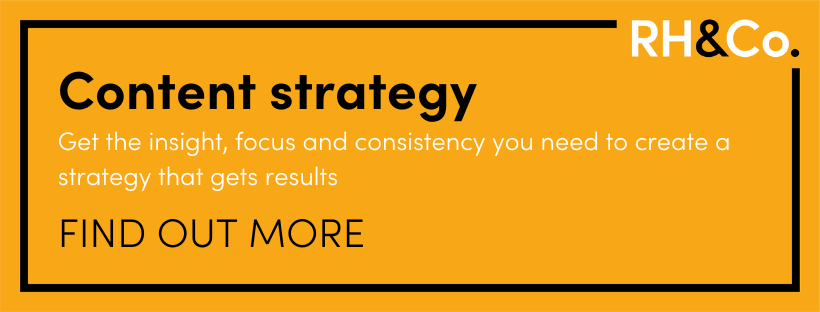
A side note on subjective vs objective value
We’ve already said that the problem of intangibility is really a problem of defining and communicating value. So part of overcoming the communications challenge around marketing or selling an intangible offering is about really understanding what your audience values.
In their HBR article, The B2B Elements of Value, authors Eric Almquist, Jamie Cleghorn and Lori Sherer, of global management consulting firm Bain & Company, describe the Elements of Value Pyramid. The pyramid encompasses 40 different types of value perceived by B2B buyers, organising them into five levels.
- At the base, you have Table Stakes, the basic criteria you’ll need to hit to even be considered. This includes elements like meeting specifications and acceptable price.
- Next is Functional Value, which can be economic (e.g. cost reduction or improved top line) or performance based (e.g. quality, scalability).
- Then there’s Ease of Doing Business Value, which covers a lot, from productivity (e.g. time savings, reduced effort) to relationship (e.g. expertise, cultural fit)
- On the next step up we find Individual Value – the value you offer to the person making the decision – both personal (e.g. fun and perks, reduced anxiety) and career (e.g. reputational assurance).
- And finally there’s Inspirational Value – this is where concepts such as vision and social responsibility come into play.
What’s interesting about the pyramid is the way that the more intangible or subjective value elements are closer to the top, while the foundation is made up of more tangible or objective ones.
This shows us several things about communicating the value of B2B offerings. First, we need to be able to tick the tangible, objective value boxes in order to be in the game. But we also need to be able to communicate value higher up the pyramid in order to differentiate ourselves.
Solution 03: Build trust in your brand
There is one final solution that, if you can achieve it, will outperform all the others, and that’s building trust in your brand. Because once a client trusts a brand, they’re far less likely to quibble over how many hours a consultant dedicates to a given programme or whether they’ll be able to measure the impact of a digital transformation programme.
After all, you don’t see clients asking McKinsey or Accenture to justify their prices or explain their consulting process in minute detail, businesses just assume that they will gain value because there is such deep trust in those brands.
Although building trust is far too big a topic to dive into in much detail here, there are two elements to consider: demonstrating (rather than describing) your worth, and having others validate that worth.
To demonstrate your worth, you need to put all that intangible knowledge into a tangible format that your audience can consume. From research reports to thought leadership articles, webinars to podcast interviews, expertise-based content gives your audience a way to ‘test’ your expertise without committing to engaging your services.
To have others validate your worth, call on the people who have already been convinced of your value. Get testimonials or, better yet, create case studies. Use NPS scoring or online review tools. PR is another important part of the puzzle here – a mention in a respected industry publication may be exactly what you need to get an introduction to the right person.
For more on how brand translates to value in the mind of your audience, check out our articles on what is brand, how brand influences investors, and how buyers perceive expertise.
If you’re a marketer responsible for executing an expertise-based positioning strategy, you’ll know how important it is to collaborate with the subject matter experts in your business to create expertise-based content. But how exactly do you go about doing that?
Before you start, you might want to take a look at the first two articles in our series on communicating expertise:
- Expertise: what it is and how buyers perceive it
- How to build brand authority using expertise-based content
Now you’re all caught up, it’s time to focus on the particular challenges you’re likely to face as you go about creating expertise-based content to support your brand position.
While you may be well versed in your industry – even a specialist – you’re not the subject matter expert. The person or people with the deepest insights might be the founder or CEO, the CTO or Chief Science Officer, the product team or the consultants out in the field.
As we mentioned in the second article, content produced by marketers in isolation from subject matter experts is likely to feel insubstantial, no different from that created by businesses with no expertise full stop. To set your content apart and make your brand’s reputation shine, you’re going to need to work with your experts.
Easier said than done. Here are some of the challenges that you’re likely to face, along with solutions you can use to ensure you get the most out of them.
TL:DR
- Challenge 01: Your subject matter experts aren’t marketers
- Challenge 02: Your experts are very busy people
- Challenge 03: They just have too much expertise and knowledge
- Challenge 04: They don’t know how expert they are
- Challenge 05: They just don’t respect your position
- A bonus challenge and solution
Challenge 01: Your subject matter experts aren’t marketers
Every content marketer dreams of finding a subject matter expert who is also a brilliant content creator. Few realise that dream. It’s rare that a leading data scientist or pioneering microbiologist or highly qualified leadership consultant is also a talented and experienced marketer.
Chances are, if left to their own devices, your subject matter experts will pitch their writing at the wrong level for your audience. They will almost certainly use the wrong tone of voice – especially if they come from an academic background. And it probably won’t be strategically informed.
Solution:
This is where you bring together their expertise and yours. Even if you’re lucky and your experts are fairly decent writers, you’ll still need to create the content strategy, set the topic areas, write decent briefs, make sure there are thorough brand voice guidelines available, and probably do a lot of editing.
But that may not be enough. If your experts aren’t likely to be able to craft great content even with guidance, you’ll need to think of them as gold mines. Your job is to dig until you find a rich seam and then extract as much gold as possible and use it to craft the content yourself.
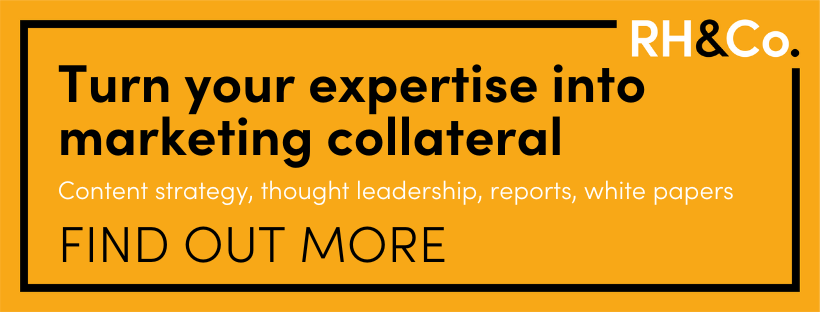
Challenge 02: Your experts are very busy people
Even if you’ve landed yourself an expert who is adept at creating content, there’s a good chance they’ll be too busy to put pen to paper. At least not with the frequency and consistency you need to support a decent content strategy.
It could also be that they simply aren’t all that interested, especially if they can’t see the benefit of creating expert content. Which means even if they say yes, they’ll find some reason why they couldn’t deliver this month – sorry, too much going on with the latest sprint or patent application or fundraising round.
Solution:
Let’s address the latter issue first. If your expert isn’t convinced that content is important, you’re going to need to sell the benefits and make your case. Remember, they’re not the marketing expert, you are – it might be obvious to you that expertise-based content can have a significant impact on the business but not to them. Find out what it is they care most about – whether it’s generating leads or getting speaking engagements – and appeal to that.
Then, once they’re convinced, make it easy for them. Rather than bugging them every week, arrange a longer session once a month or even once a quarter to get the information you need for a content series.
And make sure that you do your research so that rather than asking them the basic questions – the stuff you could find out with a bit of research – you can ask them for those insights that only they as experts can bring: the anecdotes, the opinions, the nuance.
Challenge 03: They just have too much expertise and knowledge
Experts, by their very nature, hold a lot of information in their heads. They may be good at accessing that information, but they’re probably less adept at sifting through it and working out which bits are relevant to the given piece of content you’re creating. Being passionately interested in their subjects, they may well go into far too much detail.
Solution:
Imagine that information is a tangle of yarn. In that state, it isn’t inherently useful unless you’re a passionate collector of yarn. In order for it to be useful, it needs to be untangled, and the right strands knitted together according to a pattern to form that jumper, or a scarf or a hat. Ditto information.
As a marketer responsible for creating content based around subject matter expertise, you need to get good at extracting the right information from your experts – the untangling and selecting process – as well as using it to create the content itself. So you’ll need to learn to ask the right questions and guide the conversation so it stays on the right track, pushing back when your expert veers off track.
It might also be helpful to create a brief for your experts to consider in advance so they feel prepared. This is especially important if your expert is prone to rambling or if they’re the kind of person who likes to ponder a question for a few minutes – or hours – before giving their answer.
You’ll know – or get to know – your own experts and what you need to do to get the best out of them.
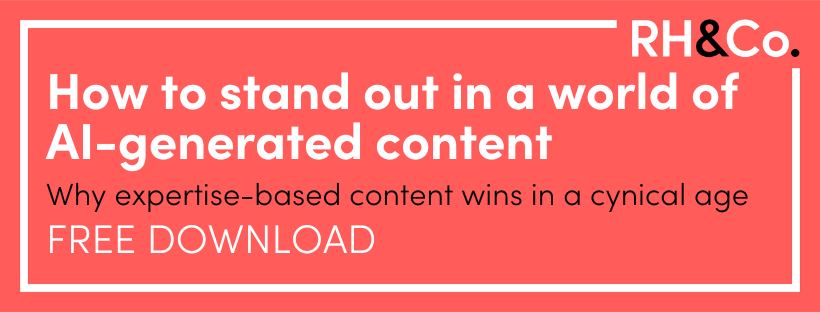
Challenge 04: They don’t know how expert they are
If challenge 03 is about your expert sharing too much detail, this one is the opposite. Experts often sit at the last of the four stages of competence – unconscious competence. That’s when you’re so good at something, or so knowledgeable about something, that you don’t realise how much others don’t know.
This can lead to two different problems. In the context of creating content, your expert may not drill down into a subject in enough detail because they assume you – or your brand’s audience – understand their jumping in point. Or they might completely miss the most interesting and relevant points full stop because again, to them it’s ordinary even though you know that your audience would be fascinated.
Solution:
Again, your job here is to help your experts to a) identify what’s interesting to their audience and b) pitch it at the right level.
In our briefing sessions at RH&Co we often help experts to come up with analogies to make whatever it is they’re talking about more understandable to the brand’s audience. As an example, we work with a company that’s in embedded finance and one of their experts was talking about the difficulty of performing KYC (Know Your Customer) checks to protect against financial crime. The analogy we helped them come up with was:
“It’s the equivalent of taking a utility bill to the bank to prove identification. Except in this case, the bills aren’t yours and you might not know how to find the people who have them.”
You can see how that instantly makes the subject a lot more tangible and relatable.
Challenge 05: They just don’t respect your position
This one might sound a little harsh but we’ve heard it from enough marketers to know that it’s true, even if it’s not meant as badly as it sounds when you write it down in black and white. It’s just so much easier to cancel an internal meeting than an external one, or push team based tasks down the to-do list because a request related to a client project feels more urgent.
Solution:
In the same way that kids will often ignore their parents but listen as soon as a visitor has something to say, we’ve found that experts usually pay better attention to us as outsiders than they do to their own people.
Another benefit of being an outsider is that we can push back without fear of internal politics. We’ve often stayed on a briefing call with a marketer after the subject matter expert has left and heard them marvel at how much we’ve managed to extract. They may have been asking the same questions for weeks and not getting anywhere. It’s annoying but it’s just the way it is with some experts.
A bonus challenge and solution
If you’re considering bringing in support to help you extract the right information from your subject matter experts and use it to create genuinely useful, authority-building content, you may find yourselves facing one final hurdle.
The problem with some subject matter experts is that they don’t believe anyone else is capable of representing their knowledge faithfully. That’s why we wrote “How can you blog for my business if you’re not an expert in my subject?” Follow the link for a post that’s designed precisely to help you make your case without treading on any political landmines.
And if you’d like to talk more about building your brand authority using expertise-based content, get in touch.
The Rin Hamburgh & Co team is made up of skilled experts with many years of experience. Easy enough to say – but not especially convincing, right? Being an expert is one thing – proving it is quite another.
In the first blog in our series on communicating expertise, we looked at the deceptively simple question: what is an expert? But if you want to build your brand authority, it’s not enough to have expertise in your organisation, you need to prove you have it. Again and again.
One of the surest ways to do this is to create and consistently publish content that draws upon the expertise in your organisation, but where do you start?
TL:DR
- First, you have to define your expertise
- What experts need to know about their audience
- Content strategy for expert-led businesses
- The importance of collaboration
First, you have to define your expertise
Before you can convince others of your expertise – and that might be yours personally or that which is contained within others in your business – you really need to thoroughly understand what that expertise is and be able to clearly define and articulate it.
In part this is a deliberate decision around positioning. The more you (as an individual or brand) specialise – horizontally or vertically – the more concentrated your experience and therefore your expertise becomes. So an app development agency specialising in React Native or working purely with telco brands is going to be better able to serve clients in this area than a general agency, and perceived as more expert by their chosen audience.
But your value proposition may be more nuanced than this and so communicating may not be straightforward. This is why, before you can create a content strategy designed to build your reputation as an expert brand, you need to clarify and communicate your brand message.
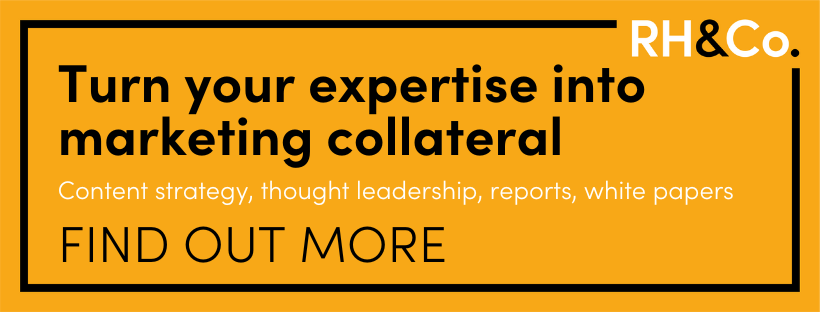
What experts need to know about their audience
Of course, communication is as much about who is listening as who is speaking, whether we’re talking about foundational messaging or the content you build upon it. That means you need to have a deep understanding of your audience.
This is the case across all marketing but in particular, for expertise-based content, you need to think about two things:
1) What is their knowledge base?
As an expert brand, you need to be very clear on how knowledgeable your audience already is – or isn’t – about your subject area. This will determine both where you pitch your content and how high a bar you need to meet to establish that expertise.
Let’s say you’re a private chiropractic clinic looking to create content for your patient audience. They might need to be talked through the basics of what chiropractic medicine is and why it’s beneficial but they’ll probably assume that there is a level of expertise within your practice.
Imagine, however, you’re a chiropractic-led medtech company looking to sell your platform to an audience of orthopaedic surgeons or an NHS trust. That audience is already highly knowledgeable and they’re likely to be much more sceptical about your expertise, so your content will need to work that much harder.
If expertise is high grade cashmere, then expertise-based content is a hand knitted cashmere jumper.
2) How much do they care about?
Another thing you’ll need to know about your audience is which aspects of your expertise they care about. Because there’s a good chance that there’s a very big chunk of it that they literally don’t want to hear about at all.
You (or your subject matter experts, if you’re the marketer in charge of content) might be happy to geek out on spiral dynamics or financial compliance legislation but your audience wants to know how to lead a successful team or get their app processing payments more quickly.
They want to see that you understand how what you do links into their world. How can you make it useful to them? If expertise is high grade cashmere, then expertise-based content is a hand knitted cashmere jumper.
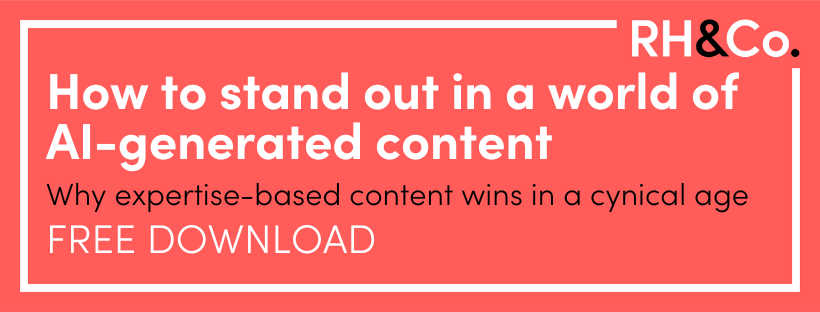
Content strategy for expert-led businesses
Content strategy is too big a subject for us to go into in much detail here. Content pillars, buyer journeys, content categories like ‘how tos’ and ‘roundups’ – that’s content marketing theory 101. If you’re a subject matter expert, these are all things you’re going to need to brush up on, or you’re going to need to hire yourself a marketer.
But marketing knowledge alone isn’t enough to create expertise-based content. The truth is that plenty of brands provide useful content – guidance, education, data, trends, facts – by drawing on the internet and reiterating what other people know. There’s no subject matter expertise present to elevate it.
To imbue your content with that final level of authority, you need one of two things:
Demonstrable experience
The more you can link your content into real life, the more anecdotes and stories and case studies you can thread through your content, the more weight it will have.
For instance, one of our clients is a highly experienced executive search consultant with decades of experience under his belt. Every one of the blog posts we’ve worked on with him has been stuffed so full of detailed real life situations that the reader is left in no doubt as to his lived experience and deeply practical knowledge. It also means his story-filled content stands out when set against the dry explainer content that exists elsewhere in his field.
Original research
This point links back to the first post in our series on communicating expertise and Dr Kneebone’s Master stage, where you’re actually shaping your field.
Another client of ours, a purpose-led HR consultancy with an ESG employee benefits tech platform, recently commissioned a study and worked with us to create a report on how climate conscious employees are, weaving together the data with insights from the subject matter experts within their team.
Now when they’re creating content about how employees are more climate conscious and how leaders need to think about this when they’re choosing their employee benefits, they’re not just regurgitating what everyone else is saying, they actually have something unique that they can refer to.
To create truly rich, effective expertise-based content, you need to involve both subject matter experts and expert marketers from the offset.
The importance of collaboration
We’ve already acknowledged that there are plenty of brands creating content based on what’s already out there. Increasingly, you might argue that they don’t even need marketers to do this work – tools like ChatGPT can do it far more quickly and cheaply (albeit less accurately, in too many cases).
Sadly, there are also plenty of brands stuck at the level of this more generic content because their experts are siloed from the marketing department, who are creating content with only a superficial understanding of what they’re writing about.
To create truly rich, effective expertise-based content, you need to involve both subject matter experts and expert marketers from the offset.
Marketers, it’s your job to become a prospector, mining your expert’s brain for the most valuable seams of gold that you can then shape into content that serves your audience and the brand you’re building. You’ll need to set the strategy and push back when your experts stray from it. Remember, they’re not the marketing authority, you are. More on this in the next blog post in this series on communicating expertise.
And subject matter experts, you need to make yourself available and you also need to respect the expertise your marketer has. You’re creating content, not writing an academic paper or presenting to a handful of peers who are as interested as you are in every nuance of your subject. Your marketer is there to extract and shape the right aspects of your expertise so that it hits key marketing and business objectives.
In our experience, this truly collaborative relationship is hard to achieve – be prepared for the Storming stage of Tuckman’s group development model – but if you can achieve it, you will have the potential to create content that allows your brand to shine out as an expert among your peers and competitors.
There are many ways to position a brand in a marketplace. You can compete on price or personality, values, location or, if you’re lucky, the uniqueness of your product or service offering. Or you can choose an expertise-based positioning strategy.
Expertise builds trust. It encourages loyalty. It allows you to charge a premium because it shows you’re wiser and sharper than the next brand – and you can prove it. If members of your team have mastered certain disciplines and subjects, why would you try to compete on price?
This strategy is also a strong choice because it’s difficult to emulate. You can’t fake expertise, or not for long anyway. Only a few brands have what it takes to even qualify – and fewer know how to translate the expertise within their business into marketing strategy.
In this mini series on communicating expertise, we’re going to be looking at what it takes to build brand authority. We’re also going to look at the marketing challenges that stand in the path of every expert-led organisation. But before that, we need to clarify what an expert actually is.
TL:DR
- What is an expert? The difference between skill, knowledge and language
- What does it take to become an expert?
- How do people perceive expertise?
- How to establish expertise using content
What is an expert? The difference between skill, knowledge and language
The Merriam Webster dictionary defines an expert as someone with a special skill or knowledge representing mastery of a particular subject.
Already we’ve got two different nuances here – skill vs knowledge. A skill is related to something you can do, so an example of a skilled expert might be a master carpenter or senior software engineer. Then you have the more knowledge-based experts, like university professors or management consultants.
There’s a third type of expertise too: interactional expertise, which surgeon and author Dr Roger Kneebone describes in his book, Expert, as the “ability to speak the language of experts whose work you cannot do.”
An example of a profession that takes interactional expertise to its highest point is journalism, since journalists write expertly about many subjects in which they themselves are not experts. We’d like to suggest that the best copywriters and content marketers fall into this category too.
You may be born with talent but you won’t be an expert until you’ve put in the time, not to mention effort.
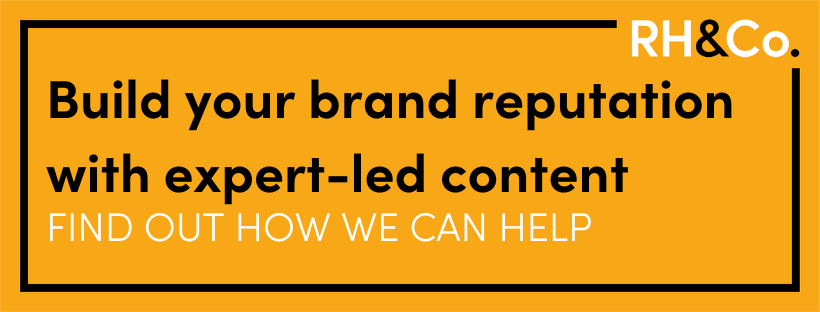
What does it take to become an expert?
Of course, having some level of knowledge or skill doesn’t automatically make you an expert. You have to work for it. That said, the moment you can call yourself an expert is also not a clearly defined milestone. It’s an ongoing and evolving process. So how do you become an expert?
In his book Outliers, Malcolm Gladwell popularised the ‘10,000 hour rule’, which essentially says that to become an expert at something you need to put in 10,000 hours of practice or study. This is actually an over-simplification of the work of psychologist K Anders Ericsson but it makes an important point, which is that there is a degree of time needed to become an expert. You may be born with talent but you won’t be an expert until you’ve put in the time, not to mention effort.
Dr Kneebone describes this evolution as the Apprentice-Journeyman-Master pathway. As an apprentice you’re putting in the time under someone else’s tuition or guidance. Next, you become a journeyman and, archaic term aside, this is where things start to shift. You move from supervised to independent practice, you start to take responsibility, develop your own style, and you learn to improvise.
Only then, once you’ve spent a significant period of time in this journeyman stage, do you finally step into being a Master. This is where you actually begin redefining your field of expertise, building on it and adding to the knowledge base, pioneering new things, even passing it on – in other words, teaching.
As you can see, there is no way to shortcut expertise. Even those born with extraordinary abilities – from Mozart to Serena Williams, Marie Curie to Bill Gates – all need to put in the time and effort required to claim the title of expert. Likewise, there’s no point building a brand positioning or marketing strategy around expertise unless you or your team has spent years accumulating it.
How do people perceive expertise?
Let’s assume for the moment that there is a genuine level of expertise within your business – it may lie with the founder, the CTO, the product development team or a handful of consultants. Now the question is: can you prove it? Because what is there and what people see are often two vastly different things.
When you’re scoping out a business to see if they’re experts – let’s imagine you’re an SME looking for an ESG consultant, armed with nothing more than a handful of names from Google or LinkedIn – there are a few boxes you’re going to expect them to be able to tick as a baseline…
Understanding
First, you’ll want to know that they understand you – your sector, your challenges, your goals. If you’re a multinational FMCG brand, you’re likely to discount the consultancy that has specialised in SMEs or the hospitality sector.
Clarity
You’ll also want to get some clarity around the problems you’re facing. Some help digging below your surface level symptoms to uncover what’s really going on. A bit of guidance and even empathy goes a long way here and also helps to show they actually understand you.
Insight
You’ll also want your expert to be able to give you insights – to show you what you don’t know. An expert will educate you, give you the data, the trends. What is it you should be focusing your attention on? What questions should you be asking?
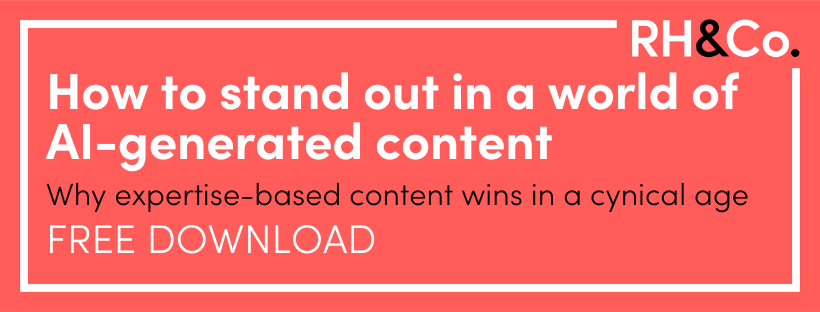
Solutions
Where you have a problem, you’ll expect them to be able to show you what solutions are available – not just what they can do for you as a service provider, but all the possibilities. What are the pros and cons of each? What are the cost implications?
Recommendations
And you’ll expect them to be able to give you some recommendations. Again, this is not about them pushing their solution but about them really understanding you and showing that they care about you getting the right outcome, even if that isn’t working with them.
The differentiator… Evidence
And then finally – and this is most crucial – you’ll want them to be able to back up everything they say. You’re about to spend a lot of money and take a big risk. You need to know they can walk the walk as well as talk the talk.
How to establish expertise using content
Now bear in mind that a lot of these points above are going to be part of the service that is ultimately delivered to you. By the end of your engagement with whichever ESG consultancy you choose, they should have hit each of these marks.
But remember, we’re talking about choosing the firm in the first place. You haven’t worked with them yet – you haven’t even booked your free, no obligation consultation – you’ve just got a handful of names.
So how can they show you that they understand you more than the next brand, that they have deep insights into your problem and can navigate you through the possible solutions? That they have experience and get results and that they actually care?
That’s where content comes in. And that’s what the next blog in this series is all about. To make sure you don’t miss it, follow us on LinkedIn or sign up for our fortnightly roundup, The Right Words.
As a technology brand, you’re always breaking new ground. That’s a tough enough task in itself. Before long though, another brand is breaking the ground you’re currently standing on. This is the circle of life in the startup, scaleup and enterprise world, and it requires some nifty work from marketers to create a strategy that doesn’t get swallowed by the shifting landscape.
This is the last article in our series on brand challenges in the technology market – and in case you missed them, you can sidle over to our thoughts on how to market complex technology and how to do it in a fast-moving industry.
Right now though, we’re going to dive into what makes this market so precarious: you’re disrupting or you’re in danger of disruption. And for brand marketers, this means you’re facing a tricky set of challenges.
TL:DR
- Challenge 01: Disruptors need to change the rules of engagement
- Challenge 02: You’re reaching the disillusioned or neglected
- Challenge 03: You can’t build forever on a foundation of disruption
Challenge 01: Disruptors need to change the rules of engagement
If you’re a disruptive business, you’re not just trying to improve the way things are done, you’re trying to fundamentally change them. That could be as simple as switching the standard of social media content from curated pictures to scrappy 30 second videos, or it could be as complex as changing the way enterprises procure and pay their supply chain.
If your onboarding process takes minutes, and if there’s no cost or a negligible one, you have an advantage here: you can take people straight to proof of concept.
That’s definitely not the case for every brand though. What if your disruptive technology requires a minimum investment of £20,000? Or if onboarding is going to take several months? Or if your users are going to need to upend their techstack?
Here you’ve got your work cut out for you. You can’t rely on people trying your product to see that it’s so much better than the way things used to be. So what can you do to change the rules of engagement?
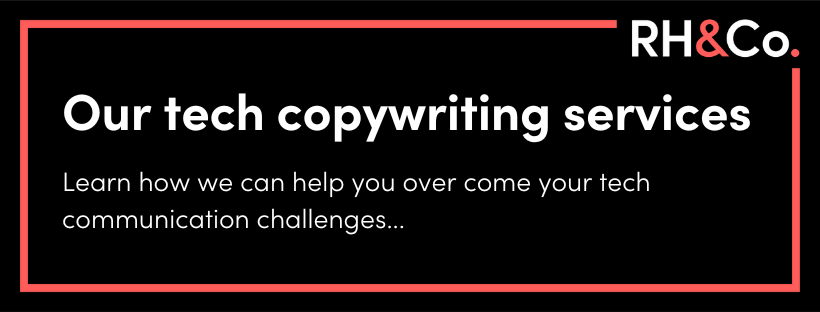
Solution 01: First convince people a new idea is true or possible
Behind every disruptive product lies a disruptive idea, such as:
- Ethical clothing doesn’t have to be artisan
- Instant coffee can be as good as barista coffee
- Any house or room can be an airbnb
The trouble is that in technology this premise is often far more complex:
- Open loop payment systems are better than closed loop
- Embedded finance is the future of SaaS
- An employee’s experience of the internet is an HR issue
- Mobile QA tooling is broken without automated, end-to-end testing on real devices
Yes, there is a small subsection of the universe that will get it at first glance. They’ll probably be your early adopters. But the rest will need to understand the context first (why is mobile QA tooling broken? What are the limitations of closed loop systems?)
You might be able to communicate what you need with a single, ingenious line. Like the 2014 campaign “Slack replaces email in your company,” or UiPath’s “We make robots so people don’t have to be robots.” Or, to take a favourite one-liner from our client Weavr: “We help cloud accounting apps move cash, not just watch it.”
That’s rarely enough on its own though. Some of your audience will need more detail before they’ll believe a new idea. Our client BaseKit wants to help big businesses understand that micro businesses need better access to new technology. To drive that premise home, we created an 8,000-word report with original research, interviews and stories.
Challenge 02: You’re reaching the disillusioned or neglected
Disruptive technology rarely starts out by targeting the mainstream. It usually goes after the outliers, the excluded, and the underserved, who either feel overlooked or actually are overlooked by the current products on the market.
That’s an opportunity, but it’s also a challenge. As an example, your audience of small businesses and sole traders might not have had a reason to care about accounts payable and receivable technology before – they couldn’t afford it and they didn’t have the time to learn to use it. Historically your product would be totally irrelevant and out of reach. You have to convince them they’re now included.
Alternatively they might be a disillusioned or disengaged audience – for instance, a Gen Z employee, an entrepreneur from a BAME background, or a team of developers who are tired of using catch-all platforms like Google Firebase to build products. Your task is to show them you relate to their pain and you have the beginnings of a cure.
Solution 02: Show empathy before you sell
In some ways this is marketing 101 but sometimes the simplest principles are the toughest to execute on well.
Particularly in technology, it’s easy to get straight to the features, the metrics and the bottom line benefits. First though, it’s best to take a moment to talk like a human. That’s ultimately what will cut through the disillusionment or alienation that your audience is currently experiencing.
Storytelling is your biggest ally here. We’re talking real stories from real humans, ideally talking from the heart. It’s a great opportunity for:
- Expert-authored articles
- User-generated content
- Employee-generated content
- Influencers
- Interviews
For instance, one of our clients wanted to shine a spotlight on the transit system of California. In that state, it’s typically only the poor that travel by bus. Our client wanted to serve that community while creating a payment system that attracted new riders, so that the whole transit system could become a better funded, green alternative to driving in the region.
It’s not just the riders that felt disenfranchised here, it’s the bus agencies too. One glance at a neighbouring big city’s metro system tells you “this has funding”. But the rest of the region was stumbling along with antiquated or non-existent technology.
To set the stage for a new norm, we created a campaign, full of stories, interviews and real world examples. All of these showed how a new, accessible, affordable technology changed everything: these poorly-funded bus agencies could create a transit experience that rivals the big cities.
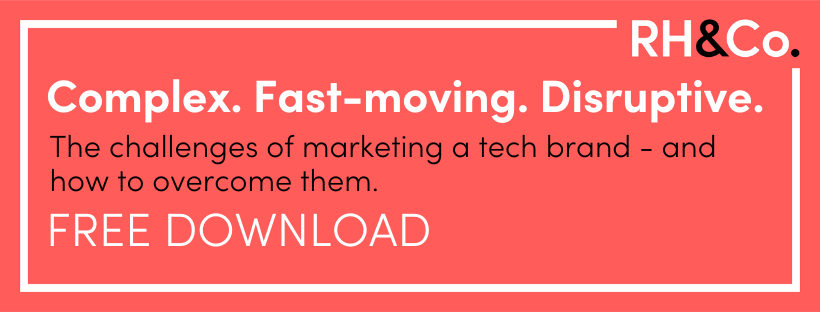
Challenge 03: You can’t build forever on a foundation of disruption
The truth is, you’re never a disruptor brand for that long – in tech, everything simply moves too fast.
You may start at the low end of the market but to expand you’ll need to appeal to premium or enterprise customers too. Or you begin by helping one community but pretty soon you’re trying to help many communities. Now you have investors, client expectations to meet and newcomer competitors who are right behind you.
Although they’re often held up as an example, Uber is no longer disruptive. They’re being chased down by the carbon neutral Bolt, the VAT-paying Kapten and community-focused brands like the woman-exclusive London Lady Chauffeurs. Uber has to stay ahead by providing more features and better quality control – and whether they’ll succeed, only time will tell.
If you’re going to defend your position, you’re better off finding the stories and parts of your feature-set that appeal to the emotional makeup of your audience.
Likewise, Slack once summarised their offering rather elegantly in the phrase “Slack replaces email in your company.” It was disruptive and interesting at the time but now there are plenty of solutions that replace email. So the company’s current campaigns focus on discounts, big feature lists (“over 1800 integrations!”), and a confidence vote from other established brands like Spotify.
This might not be the ideal way to do it but brands do need to grow up a bit eventually. As Deloitte put it in their 2023 tech trends report: “Startups often embrace the mantra ‘move fast and break things.’ It’s easier for them to be disruptive because they’re definitionally starting from zero and don’t yet have a legacy to protect. Established organisations, on the other hand, very much do.”
You can’t build on a foundation of disruption forever, so what do you do next?
Solution 03: Find the heart of your brand and keep it fired up
It’s a natural fact of life in the startup to scaleup world: your brand must evolve. Your last campaign is no recipe for the next one, and your core brand message might no longer resonate with your new target audience. You need to stay relevant while staying in touch with what made your company special in the first place.
For instance, new Slack-like SaaS platforms such as Mattermost and Rocket.Chat are taking on the juggernaut by staying open source – a point that instantly endears them to developers and sets them apart from incumbents like Slack and Microsoft Teams.
The trick will be, once every work platform is eventually open source, to know what their differentiator will be then. They could join the feature/discount/price race and try to live on historic gains in brand recognition. This does work for some, after all. But “more, better, cheaper” is a tiring message to keep up, and it’s one that’s vulnerable to the more emotionally-resonant messaging of new competitors.
And there is an alternative and more compelling option. If you’re going to defend your position, you’re better off finding the stories and parts of your feature-set that appeal to the emotional makeup of your audience.
For instance, one of our clients has created extremely sophisticated software that’s years ahead of other brands. Even though there are new digital-native offerings out there now, the newcomer software is scrappy to the point of being non-compliant and incomplete. Meanwhile our client’s solution is watertight – so they double down on this in all their messaging, bringing home the sense that they are the smarter brand.
You can’t always play the scrappy startup game. You can’t focus on your MVP’s single feature for all time. But you can stay distinctive – you just need to engineer your brand at the right time.
Technology is defined as the application of scientific knowledge for practical purposes. And in some fields, all those aspects are constantly on the move – the knowledge, the application of it, and the purpose behind it.
You might be in an emerging field like generative AI, an established industry like martech that’s constantly competing for the next edge, or a reactive industry like cybersecurity that’s constantly evolving to meet the next threat. Either way, you’ll probably be selling the future, commenting on what’s next, and trying to keep up with everything that changed yesterday.
It’s a challenge to market in such fast-moving industries. How do you present a consistent brand when you need to constantly evolve? How much do you say about your product roadmap when it’s always shifting? And how do you convince the world you’re still one step ahead of your competitors?
TL:DR
- Challenge 01: The industry is changing
- Challenge 02: Your products are changing
- Challenge 03: Your customers are changing
Challenge 01: The industry is changing
You wake up, and suddenly aluminium-sulphur batteries exist. New neural-implants are viable. And, although plenty of companies haven’t finished the build of their last closed loop payment system, open loop solutions are everywhere.
Many of the technology industries move as a kaleidoscope moves. It’s part of what makes these sectors so interesting to work in, and it’s also what makes life so challenging for marketers.
As Deloitte wrote in their 2023 Tech Trends report: “Before the economic landscape of the metaverse changes from fluid to concrete, pioneers will need to make their moves.” That is just as applicable to the fields of XR, embedded finance or haptics as it is for the metaverse – both on a business level and a brand level.
It’s not always about changing your product pipeline today. Sometimes it’s enough to show you’re aware you might need to change it tomorrow. If you’re a mathematical forecasting company, for instance, your brand content might need to address quantum computing. Or if you’re in open payments, you might need to be talking about future government regulation and how your SaaS platform will be ready for it.
The danger is that in an attempt to seem ahead of the curve, technology companies can overreach. Everyone wants to talk about the next big thing so they can catch the attention of those scanning the horizon. But you’ll want to stay within the boundaries of your expertise, otherwise customers with a better understanding of the emerging technology will see through you.
Solution: Talk to your subject matter experts
This is an area where siloed marketers are a bad idea (though to be honest, are siloed marketers ever a good idea?). Marketers are often the ones with their finger on the pulse but they rarely understand the circulatory system of veins and arteries beneath that pulse.
If marketers can work with the experts in their company, and extract their perspective on an emerging subject, they’re much more likely to talk to an audience with the right level of depth, nuance and cautious optimism. In our experience, data scientists, CTOs, and product leads are also more aware of when they shouldn’t comment on a topic at all.

Challenge 02: Your products are changing
You’re used to selling a journey to a destination you haven’t finished laying the rail tracks to. The build might not be locked in, there’s still end-to-end testing to be done, but you have to market what you’re building next – because everyone else is too, and you need to show that you’re ahead.
Of course, this status quo comes with its fair share of high profile vapourware products. Whether it’s Google Stadia simply promoting features they were never able to release, or the extreme 80’s case of Ovation’s office suite programme, which was advertised with a fake demo to try and gain the funding the product team finally needed to finish it (they never did).
Overpromising isn’t an option, but neither is under promising. For a number of our clients it’s a constant balancing act: knowing when to say a feature is ‘coming soon’, using the future-facing words investors want to hear (did somebody say blockchain?), and holding fire when a feature just isn’t ready to be talked about.
Solution: Sell the future but don’t speculate
Marketers here need to keep two hands on two pulses – your audience’s needs, and your product team’s ongoing struggle to build, test and fix according to schedule.
There’s one senior product marketer we work with who is particularly skilled at doing this. As a result they’re very adept at knowing the nuances of when, how and at what frequency to advertise a feature or benefit. At times, we’ve seen them put the hard brake on the company’s content or advertising, and there have been occasions where they’ve suggested winding down the selling of a product altogether.
In our conversations, it’s been important for us to listen to their input but it’s been equally important not to hit delete on a claim unless we had to. Often it’s been a matter of suggesting alternatives and tweaks that position the messaging exactly where it needs to be. That way the brand could still sell the essence of what they’re building towards without slipping into speculation.

Challenge 03: Your customers are changing
Tech is affected more by trends than almost any other industry, with perhaps the exception of fashion. The difference is that in the fashion industry, at least historically, people make impulse, almost-instant purchases. Whereas in the technology industries, product purchases can take months, or even years to complete.
This means that the B2B technology you’re selling when you complete a sale is never exactly the same product as when you first pitched. You need to catch your addressable market’s attention now but you need to anticipate what their wants and needs will be next year. Or possibly the year after, if you’re selling to an enterprise.
A different but related issue: your audience might shift entirely. 73% of technology startups pivot to a different market over time, and even if you stay the course in a single sector, almost inevitably the size and maturity of organisations you’ll be targeting will increase.
Sometimes this change needs to happen suddenly for tactical reasons. One brand we work with has recently switched from just targeting new challenger companies, to targeting long established organisations in the energy market, based purely on new activity of these companies’ sales reps.
Solution: Keep evolving your brand intentionally
Recently, in preparation for a brand voice and messaging workshop with a scaleup, we combed through several documents that detailed the company’s customer personas and brand strategy. Even though they were created in the last 9 months, we were told they were already out of date.
No brand can remain static, and in fast-moving technology industries, you’ve got to be even quicker on your toes. As we explored in our roundtable discussion on how much should brand evolve, your messaging needs to hit the sweet spot between brand consistency and brand relevance. And to do this, you need to be constantly revising your customer personas and reevaluating your brand strategy to match.
Sometimes this is about crafting vertical-specific messaging that speaks directly to the up-to-the-minute ambitions of specific target markets. But you’ll also want to step back occasionally to reevaluate your overall brand and content strategy to make sure it’s going to resonate with your audience as a whole.
The trick is to be intentional. We’ve seen fast-moving technology companies evolve their brands unintentionally – which is a natural outcome of hiring, scaling and trying to swim in bigger ponds.
Maybe the company starts using the same tech-normative language as their new peers, or possibly their values fade into the background as they focus on selling their technology’s bottom line benefits. At this point they often need intentional brand engineering.
In case you missed it, check out the first blog in our series on marketing challenges in the technology industry: Clear as nanocrystal: How to market complex technology.
